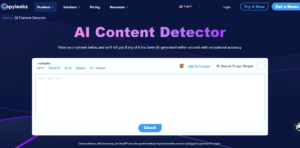The Impact of Applicant Tracking Systems on Recruitment Processes
Applicant Tracking Systems (ATS) has revolutionized recruitment processes in modern organizations. The impact of these systems is undeniable, as they streamline and optimize the hiring process. By automating tasks such as resume screening, application management, and candidate communication, ATS drastically reduces the time and effort required to identify and attract top talent.
One of the primary advantages of utilizing an ATS is the increased efficiency it brings to recruitment processes. Traditional methods of reviewing hundreds of resumes manually can be incredibly time-consuming and prone to human error. However, with an ATS, recruiters can easily filter through large volumes of applications by setting specific criteria and utilizing keyword searches. This speeds up the initial screening process and allows recruiters to focus on the most qualified candidates, improving the quality and accuracy of their selection. Moreover, applicant tracking systems provide a centralized repository for all candidate data, ensuring easy access to information and facilitating effective collaboration among hiring teams.
ATS Features That Streamline the Hiring Process
An Applicant Tracking System (ATS) is a powerful tool that can significantly streamline the hiring process for companies. ATS features are designed to automate and simplify various recruitment tasks, saving time and effort for HR teams. One key feature of an ATS is the ability to post job listings on multiple job boards and social media platforms with just a few clicks. This increases the reach and visibility of job postings and ensures consistency in how job information is presented across different platforms.
Another essential feature of recruiting ATS is its robust candidate database. All candidate information, including resumes, cover letters, and interview notes, can be easily stored and organized in one centralized location with an ATS. This eliminates the need for manual filing and sorting of piles of paper resumes, making it much easier for recruiters to search and filter through candidates based on specific requirements. The ability to quickly access and review candidate profiles saves recruiters valuable time and allows for more efficient decision-making in the hiring process.
- The ability to post job listings on multiple job boards and social media platforms with just a few clicks increases the reach and visibility of job postings.
- Consistency in how job information is presented across different platforms is ensured.
- All candidate information, including resumes, cover letters, and interview notes, can be easily stored and organized in one centralized location.
- Manual filing and sorting of paper resumes are eliminated.
- Recruiters can search and filter through candidates based on specific requirements more efficiently.
- Quick access to candidate profiles saves recruiters valuable time.
The Benefits of Implementing an ATS in Recruitment
In today’s competitive job market, organizations are constantly seeking ways to streamline their recruitment processes and attract top talent. One solution that has gained popularity in recent years is the implementation of Applicant Tracking Systems (ATS). The benefits of implementing an ATS in recruitment cannot be understated, as it brings forth numerous advantages for both employers and candidates.
First and foremost, an ATS significantly reduces the time and effort spent on sifting through resumes and applications. It automates the initial screening process, allowing recruiters to focus their time and energy on assessing the most qualified candidates. This saves valuable time and ensures that every applicant receives fair consideration.
Moreover, implementing an ATS enhances the overall candidate experience. With features such as automated email responses and status updates, candidates are kept informed throughout the hiring process. This helps to create a positive impression of the organization and strengthens the employer brand. Additionally, the centralized database of candidate information provided by an ATS enables recruiters to maintain clear and organized records, facilitating seamless communication and collaboration within the recruitment team.
Implementing an ATS in recruitment brings numerous benefits, from time and cost savings to an improved candidate experience. By streamlining the hiring process and providing valuable tools for effectively managing candidate information, ATS systems contribute to recruitment efforts’ overall efficiency and success.
Addressing Common Misconceptions About ATS
One common misconception about Applicant Tracking Systems (ATS) is that they eliminate the need for human involvement in the recruitment process. Some may mistakenly believe that once an ATS is implemented, it will autonomously select the most suitable candidates and make hiring decisions. However, it is important to understand that an ATS is simply a tool that assists in streamlining and organizing the recruitment process. While it can help filter and screen resumes based on predetermined criteria, the final decision-making power ultimately lies with the human recruiters or hiring managers.
Another misconception about ATS is that it leads to less personalized candidate experiences. Some may believe that since the initial stages of the hiring process often involve automated resume screening and pre-screening questionnaires, candidates may feel dehumanized and less engaged with the company. However, companies can maintain a personal touch by incorporating customized email templates, personalized communication, and timely follow-ups. By leveraging the features and capabilities of an ATS, recruiters can ensure that candidates feel valued and informed throughout the recruitment journey, debunking the myth that ATS compromises the candidate experience.
How to Choose the Right ATS for Your Company’s Recruitment Needs
Choosing the right Applicant Tracking System (ATS) for your company’s recruitment needs is crucial for streamlining the hiring process and ensuring efficiency. With numerous options available in the market, it is essential to carefully evaluate the features and functionalities of each ATS before making a decision.
First and foremost, consider the specific requirements of your recruitment process. Identify the key pain points and challenges an ATS can address, such as resume screening, interview scheduling, or candidate communication. This will help you prioritize the most important features of your organization. Additionally, consider the size and nature of your company and the volume of hiring you typically handle. A scalable ATS with customizable workflows and user-friendly interfaces can be highly beneficial for effectively managing different stages of the recruitment process.
Maximizing Efficiency: Best Practices for Utilizing an ATS
Efficiency is the key to success in any recruitment process, and utilizing an Applicant Tracking System (ATS) can greatly enhance productivity and streamline hiring efforts. Companies need to establish clear guidelines and best practices to ensure maximum efficiency when using an ATS.
Firstly, regularly updating the ATS database with accurate and relevant information is crucial. This includes maintaining an up-to-date inventory of job openings and consistently inputting and updating candidate details. By keeping the system current, recruiters can ensure that they are making informed decisions based on the most recent data available.

















